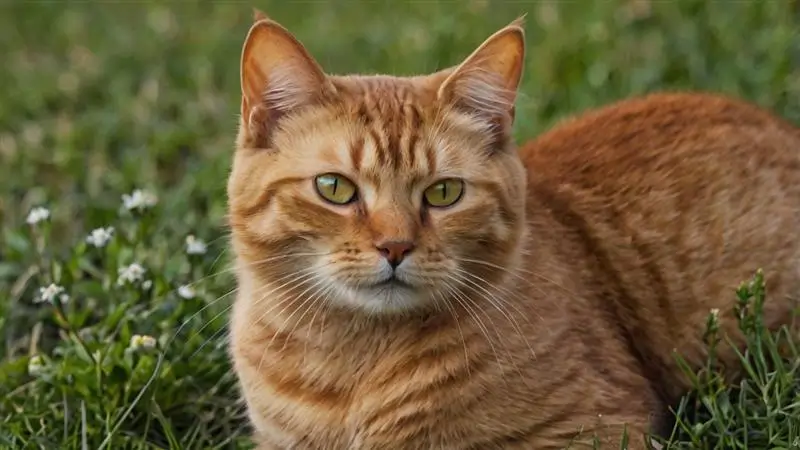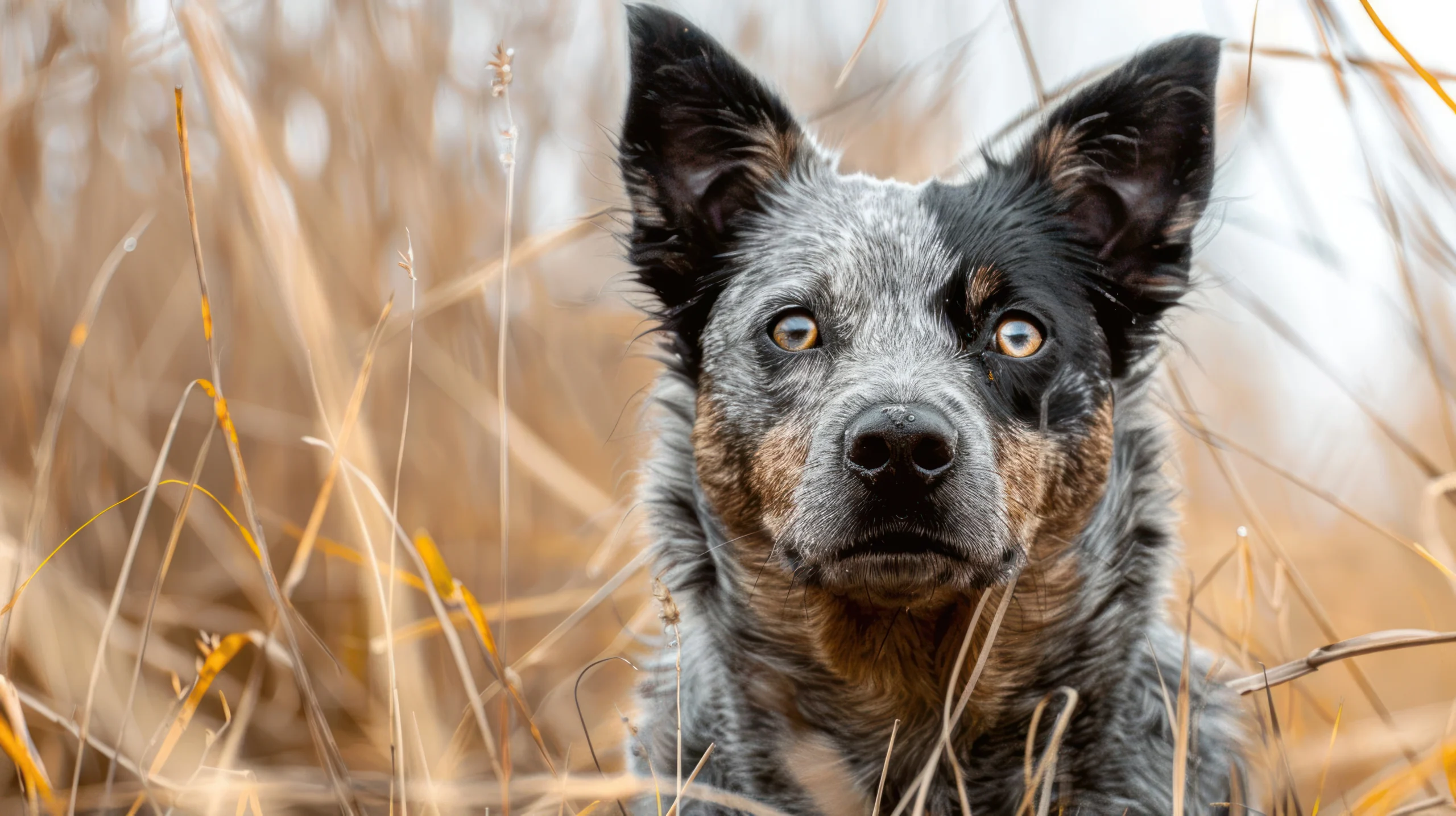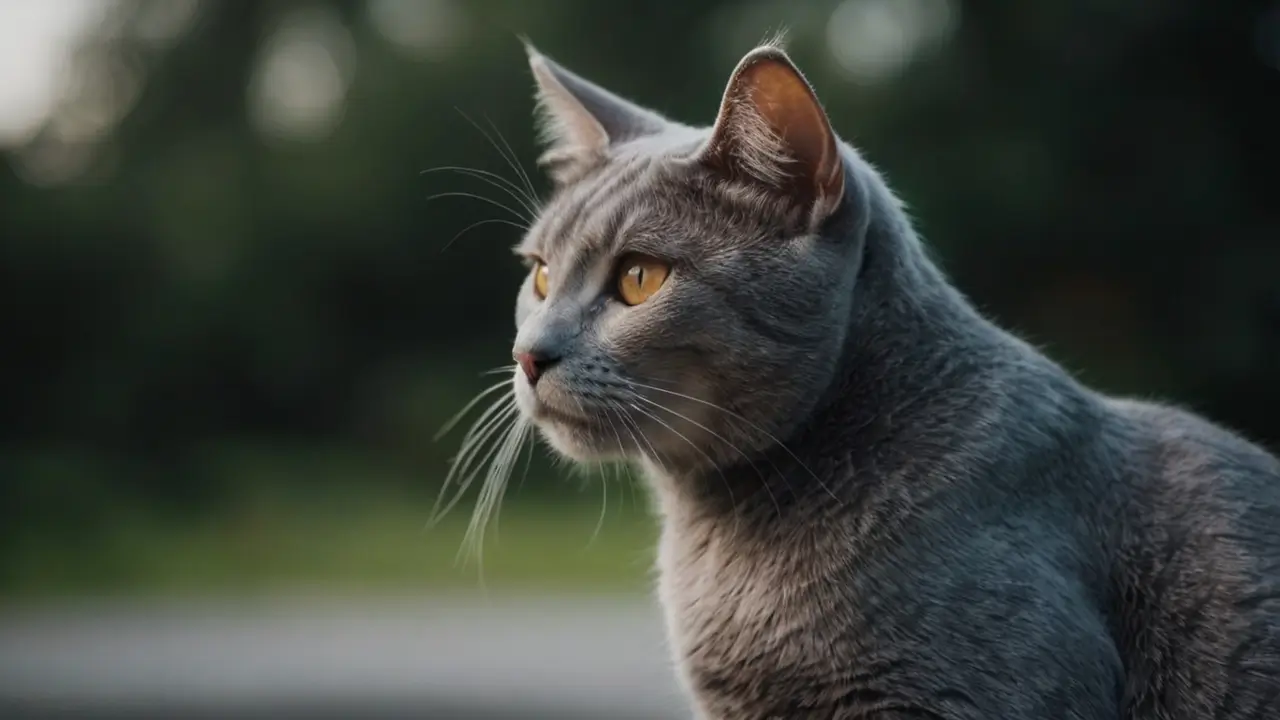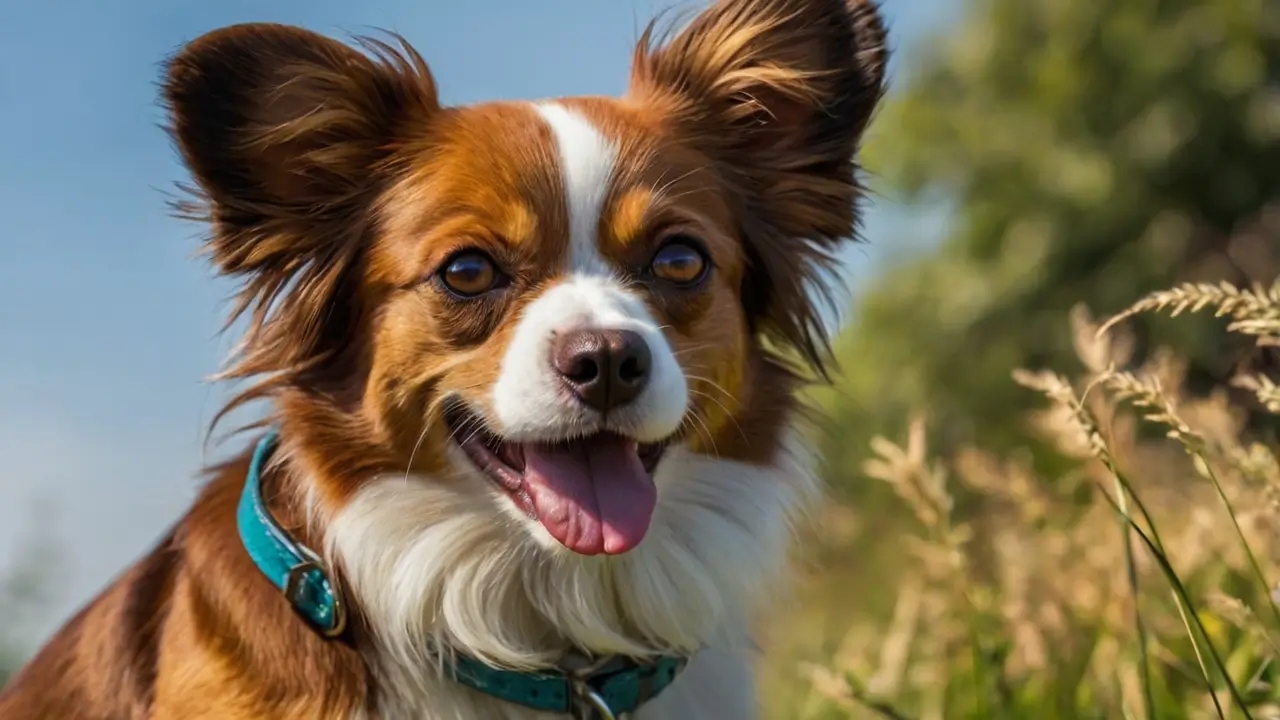Imagine a toy dog with a spirit as big as a mountain. It is draped in a coat of a long-haired dog’s silky fur. Now, picture that dog with soft, cascading drop ears. It is so graceful, it looks like a moth at rest. This is the Phalène Papillon dog. The Phalène (pronounced fah-lehn) is the original, yet now rarer, variety of the beloved Papillon. Many focus on the ‘butterfly-eared’ Papillon. However, the Phalène Papillon dog has its own unique history and care needs. This authoritative guide will dive deep into the world of the phalene dog. We will explore its origins and the simple genetics behind its look. We will cover the specialized care needed. This ensures this truly elegant appearance toy dog thrives in your home.
Phalène vs. Papillon
Many future owners get confused right away. The simple answer is they are the same breed. They are officially known as the Continental Toy Spaniel (Epagneul Nain Continental). The only difference is the ears.
- Papillon: This name means “butterfly” in French. It is known for its large, erect ears covered in beautiful fringes. This version became popular in the 18th and 19th centuries.
- Phalène: This name means “moth” in French. It is defined by its naturally drooping drop ears. This is the older, original type of the Continental Toy Spaniel.
In the U.S., kennel clubs like the AKC treat the Phalene dog as a variety of the Papillon. Both papillon and phalene puppies can appear in the same litter. This shows their genetic makeup is exactly the same. They differ only by one small trait. In Europe, the Phalene Papillon dog is often shown as a separate variety. This highlights its important history.
Phalène Papillon Dog Ears Down
The difference between the Phalène Papillon dog ears down and the erect eared Papillon is simple genetics. Dropped ears are the original, ancestral trait. Think of it like eye color inheritance in people.
A specific gene pair controls ear carriage. Breeders know that two erect-eared Papillons can carry the recessive Phalène gene. This allows them to produce Phalène puppies. This makes the Phalène’s status as the true original very clear. This Phalene vs Papillon ear genetics is fascinating.
History and Origins of the Phalene Papillon Dog
The Phalene dog’s history is a rich, royal story. It is woven through European courts and classical art.
The breed is a toy spaniel. Its lineage, as the Dwarf spaniel breeds, dates back to the 13th century. These charming small breed dogs were popular lapdogs. They belonged to noble ladies in France, Spain, and Italy. Artists like Titian often painted them. These early paintings all show the drop ear of the Phalène. Queen Marie Antoinette was known to own one. She carried her pet with her until her execution. This is a powerful analogy of a loyal companion.
The erect eared Papillon became famous later on. This happened in the 18th century. As the “Butterfly” version became very fashionable, the original “Moth” or phalene dog declined. It almost vanished completely. Dedicated breeders in the mid-20th century saved the Phalene Papillon dog. They secured its original heritage.
Appearance and Defining Physical Characteristics
The Phalène shows a truly elegant appearance. They are a balanced small breed. They stand 8 to 11 inches tall at the shoulder. They typically weigh between 6 and 10 pounds.
- Coat: The coat is silky, fine, and single-layered. It feels very soft to the touch. The long-haired dog’s look is emphasized by frills on the chest. There is feathering, called “pantaloons,” on their back legs.
- Tail: The tail is long and plumed. It is carried high over the back. This feathered tail balances their body beautifully. It is a trait common in spaniel breeds.
- Ears: The defining trait is the ears. The Phalène’s large ears hang down gently. They are set high on the skull. This is unlike the lower-set ears of a Cocker Spaniel. The base of the ear has a slight lift. This provides better ventilation than many other drop ear breeds. This is a vital point for health care.
Phalène Temperament and Behavior
The Phalène has the same wonderful personality as the Papillon. They have an active temperament. They are an extremely intelligent breed. They rank very high among toy dogs for obedience.
Intelligence and Training
This toy dog is very trainable. It excels in dog sports like agility. They need puzzles and games to match their intelligent breed’s brains. For an owner seeking a smart small breed, the Phalène is excellent. They are far more than just beautiful lapdogs!
Sociability and Energy
They have a friendly nature and bond strongly. This makes them a wonderful, loyal companion. Their energy is quite high, despite their delicate size. Like a miniature Terrier Dog, they are feisty and confident. They can sometimes be a bit bossy.
Behavior Nuances
Owners say their temperament matches the Papillon perfectly. However, the drop-eared Phalène often looks “softer.” This is compared to the “perky” erect-eared papillon. They can develop ‘small dog syndrome’ easily. This leads to a high barking tendency and demanding behavior. You must set boundaries clearly and early. Consistent, positive training is necessary.
Health and Lifespan of the Phalene Papillon Dog
The Phalene Papillon dog is a generally sturdy small breed. It enjoys a long life, usually 13 to 16 years. However, all toy dogs have specific health concerns. Responsible owners must always watch for these.
| Health Issue | Description | Preventative Action |
| Patellar Luxation | The kneecap slips out of place. It is common in most small breeds. | Keep their weight strictly managed. Use joint supplements if your vet advises it. |
| Dental Disease | Their small jaws lead to tooth overcrowding. This causes plaque and tooth loss. | You must brush their teeth every day. Schedule annual professional cleaning. |
| Hypoglycemia | This is low blood sugar. It mainly affects phalene puppies under six months. | Feed young pups frequent, small meals. |
| PRA (Progressive Retinal Atrophy) | This inherited eye disease causes blindness. | Good breeders must perform eye health testing (CERF). |
If you want an intelligent breed and an active small breed, research genetic testing. Testing the parents is essential. Checking for Patellar Luxation, like hip scoring for an Australian Cattle Dog, is vital.
Phalène-Specific Needs
Caring for a Phalene dog needs attention. Focus specifically on their signature drop ears.
Coat Grooming
This long-haired dog has a single coat. It sheds moderately. It rarely matters if it is brushed regularly. Brush them at least three times weekly using a pin brush. Pay extra attention to the thick ear fringing and leg feathers. For more expert advice, check resources like Love Your Pets Daily.
Phalène Ear Care
The drop ear of the Phalène needs more care. The open erect ear of the Papillon is easier. The slight lift at the ear base is good. It prevents the moisture buildup seen in many spaniels. However, moisture and debris can still accumulate. This increases infection risk. Inspect the ears every week. Clean the canal gently with a vet-approved solution.
Diet and Exercise
They are a small size. You must control portions strictly. Weight gain is very dangerous for their joints. They can be happy lapdogs. But their active temperament needs daily exercise. Plan for 30–60 minutes of brisk walks and playtime.
Training, Activities, and Suitability
The Phalène is the ultimate adaptable pet. It is perfect for owners who value both smarts and activity.
Training and Enrichment
Their intelligent breed nature means training is usually easy. But they must have consistency. They love puzzle toys and learning tricks. Early socialization is key. It prevents the condition that causes a barking tendency.
Dog Sports
Do not let their elegant appearance toy dog look fool you. The Phalène is a champion. They excel in agility and rally sports. They are miniature dynamos that love a job. Their athleticism rivals any large breed, just smaller. You could compare them to the playful energy of a Chihuahua Dog.
Lifestyle Fit phalene papillon dog
The Phalene Papillon dog is a fantastic apartment dog. You must meet their moderate training needs and have high energy. They are wonderful for active singles or families. However, children must be old enough to handle a delicate small breed. They are not suited for homes with very small children.
Adoption, Rarity, and Community
Finding a Phalene dog is harder than finding a Papillon. They are actively bred to preserve the older ear type.
Rarity and Finding a Breeder
The phalene dog is rare in many places. You will likely wait for a reputable breeder. Always seek breeders who specialize in the Phalène line. They must be transparent about health testing. Ask them to show the ear lineage. This proves when Phalene Papillon’s dog’s ears last appeared. Avoid “backyard breeders” who skip health screening.
Rescue and Community Insight
Sometimes, breed-specific rescue groups have a Phalène. This is a great way to find a loyal adult companion. The community provides real-world advice. For example, some puppies’ ears stand up later. An owner might think they bought a Phalène. Then its ears go up, turning it into a Papillon Dog.
Conclusion phalene papillon dog
The Phalene Papillon dog is a truly special breed. It is a living piece of history. It has the brain of a working dog. It is wrapped in the delicate, elegant appearance of a toy dog. You must embrace its long-haired dog grooming requirements and specific ear care. You must also challenge its intelligent breed mind. If you do this, you gain a fierce, loyal companion. This dog will bring joy and class to your life. Whether you call it the Moth or the Butterfly, the Phalene Papillon dog is an excellent choice.
FAQ
What is the difference between a Phalene and a Papillon?
Both are varieties of the same breed, the Continental Toy Spaniel. The only difference is the ears. The Phalène has dropped, moth-like ears, which is the original type. The Papillon has large, erect, butterfly-like ears, which is the more modern type. They share the same high intelligence and need for consistent care.
What does a phalene dog look like?
A Phalene dog is a dainty, small breed with a silky, long, single-layered coat. It features a plumed tail carried over its back. Its defining trait is its large, feathered drop ears. They have an elegant appearance and are usually white with color patches over the eyes and ears. Their body are slightly longer than their height.
Is a Papillon a good family dog?
Yes, the Papillon (and the Phalène) is an excellent family dog. They are an intelligent breed with a fiercely loyal companion nature. They are also an adaptable pet that does well in apartments. However, due to their small size, young children must be supervised to ensure they handle the dog gently.
How much does a Papillon dog cost?
The initial price for a well-bred Papillon puppy from a reputable breeder typically ranges from $1,500 to $3,500. Phalene puppies often cost more due to their rarity. This fee covers the parents’ crucial health screening. Adopting an adult dog from a rescue is usually a much lower cost option.








